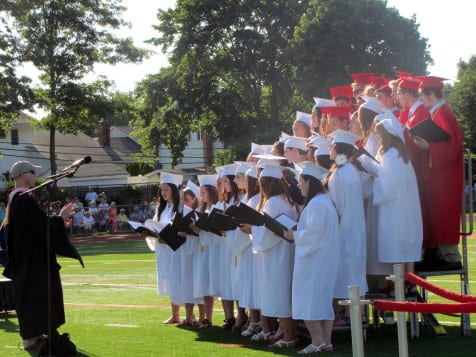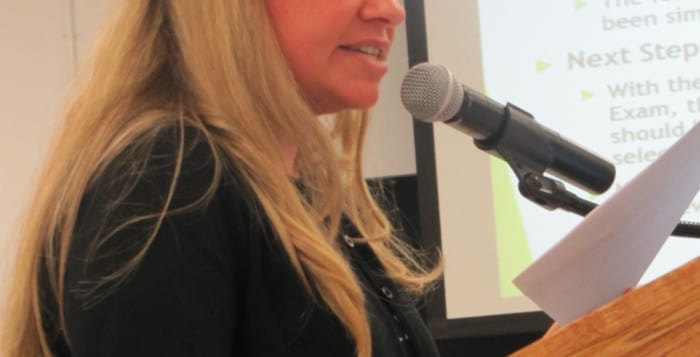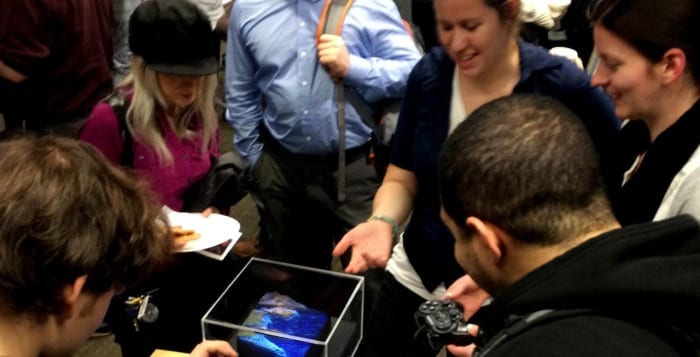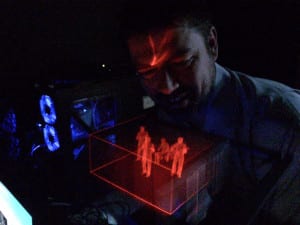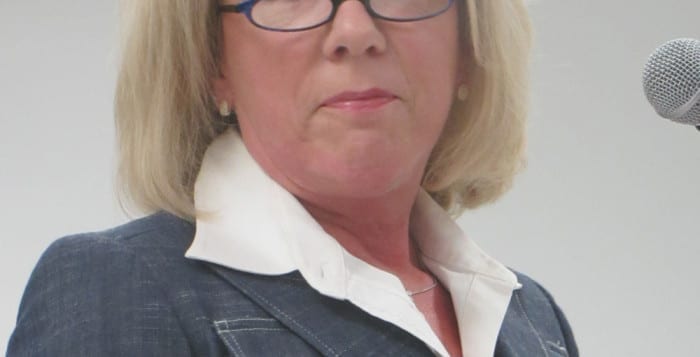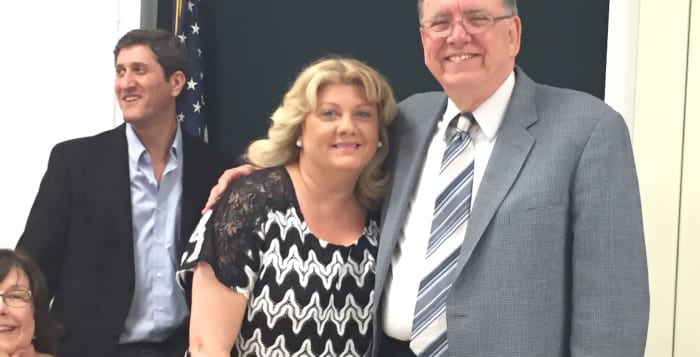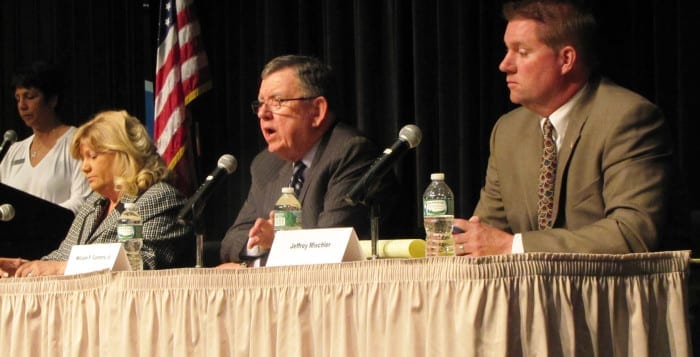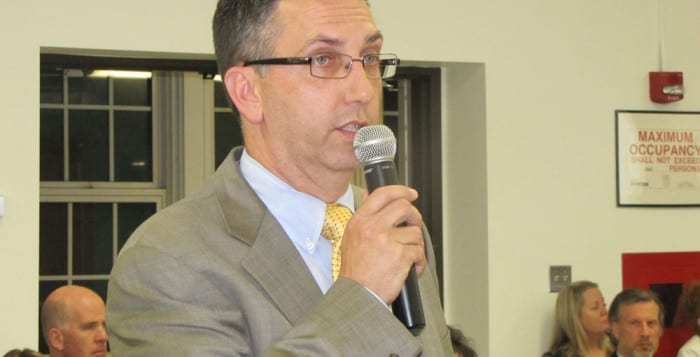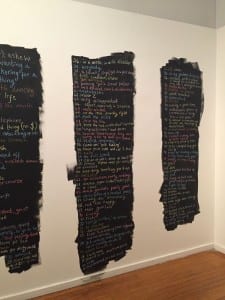Not since 2012 have three candidates vied for two seats on the Three Village school board. The last time that happened, incumbents William F. Connors, Jr. and Deanna Bavlnka were running for their current seats, which will expire at the end of June.
This year Connors and Bavlnka are joined in the at-large race for two three-year board positions by newcomer Jeffrey Mischler. Their order on the ballot, determined in a drawing required by law, will be Connors, Mischler, and then Bavlnka.
Last week, residents gathered at R.C. Murphy Junior High auditorium to listen to the candidates respond to a series of prepared questions from the audience.
Concerning the importance of the arts, extra-curricular activities, vocational training and concerns about high stakes testing and teachers’ evaluations, the trio were in agreement.
Connors, current president of the Three Village school board, referred to extra-curricular activities as “co-curricular,” explaining that for many students, those programs “are something that really makes all the difference in the world in their happiness and success in school.”
Connors, 70, has lived in the district since 1973. He retired as associate vice president of academic affairs for Suffolk County Community College and said he hopes to continue to use his professional and past board experience to shepherd the district through the fiscal challenges presented by the cap on the tax levy.
All three candidates agreed that high stakes testing is a problem for both students and teachers.
The emphasis should not be on the test, but on the materials being taught and on “teaching these kids the right way to study and the right way to learn,” responded Mischler, 44.
A high school business teacher in Center Moriches, where he also taught seventh and eighth grade math for eight years, Mischler and his wife have lived in Stony Brook for eight years. They have two — soon to be three — sons at Nassakeag Elementary School.
Mischler said he hopes to represent “the teachers, the parents, the working families” and to make sure that “financial decisions are made soundly.”
Bavlnka, the director of human resources at P.W. Grosser Consulting, an environmental engineering firm, spoke of the importance of advocacy and encouraged parents to write to government officials to protest high-stakes testing.
“We need to have our voices heard and stick together and work as a team,” the mother of two W.S. Mount Elementary students said.
A 1983 Ward Melville graduate, Bavlnka wants to continue the district’s momentum and emphasis on academic excellence and “inclusiveness to maximize each student’s chance to reach their own unique potential.”
When the discussion during the hour-long Meet the Candidates Night turned to finances, Mischler promised to examine some of the Common Core programs the district pays for, such as Go Math!, to make sure they are working.
“I’m still on the fence whether it’s effective or not,” he said of the math curriculum that was just recommended by the elementary math committee.
If funds remained, Mischler said he would use them for special needs programs in the elementary schools.
Bavlnka, 50, referred to the upcoming school district budget, which includes elementary STEM teachers, and the restoration of social workers and American Sign Language, as an example of the board’s sound financial decisions. The district’s move to natural gas heating and preparation to go solar also point to the board’s efforts to save money, she said.
“We are thinking business. We are thinking revenue and efficiency and conserving. And we’re doing a great job at it,” she told the audience.
Connors, father of four Ward Melville graduates, said he would like to do more to get secondary students out of study halls and into more electives.
“We have to work with employee groups and work with them within the fiscal realties we are now facing,” Connors said regarding the district’s long-term financial health.
“That involves a change in mindset of all of us.”
Asked about term limits, Connors, who was previously on the school board from 1994 to 2006, serving as president for the last 10 years, joked that he was definitely against them.
“The community certainly can decide if I’m representing them well,” he said. “And if they feel that the Board of Education needs some new blood, new ideas that I don’t offer, they can elect another individual.”
Bavlnka said continuity and consistency are important for building relationships. It’s also important, she said, because educational law can be “overwhelming” and “one big chunk to take on.”
Mischler does believe in term limits. “I always look for a fresh look sometimes. You know yourselves if you keep doing the same thing over and over again, you may start to fall into the same pattern,” he said.
“I feel like it’s a chance for the public to make a decision.”
That decision will come on May 19. Voting for the board seats and 2015-16 school budget will take place from 6 a.m. to 9 p.m. at Three Village elementary schools.




